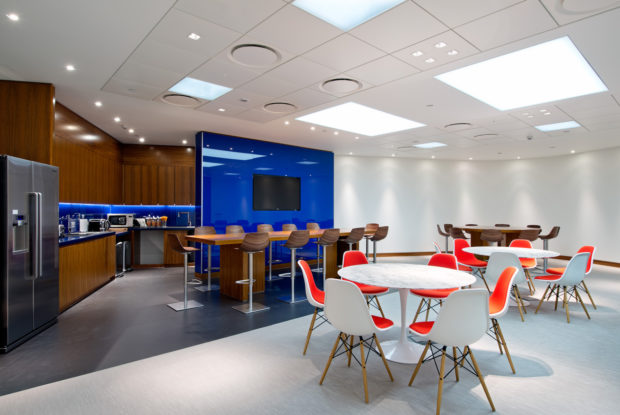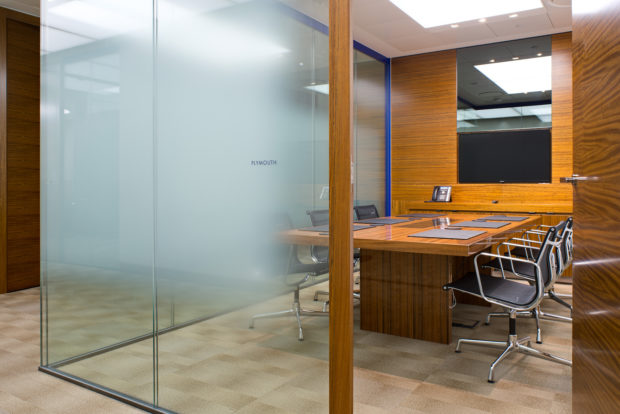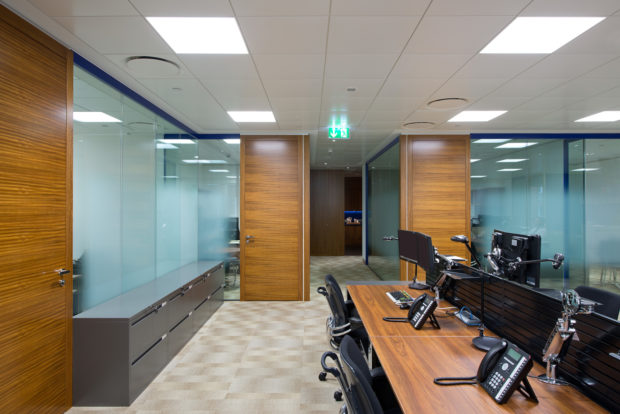In recent years, employers have started to take notice of how employees’ working environment may influence their well-being. Also an emerging interest is the impact of workplaces on the environment. Concerning office design, not only does being ecologically minded have a huge impact on the sustainability of your office’s carbon imprint and the health of your employees, but it also fosters productivity in the workplace too. We’ve highlighted the five best ways businesses can improve their office design to be more eco-friendly in 2017, using case studies to demonstrate their effect.
1.Have Green Meetings
Hosting virtual meetings is an excellent way to limit your consumption of energy and resources. By encouraging people to teleconference, you reduce the need to travel, which can waste time and create greenhouse gas emissions, as well as proving to be a costly expense. Conference calls and live web meetings are easy with online file sharing. Programmes like Slack and Skype offer excellent ways to collaborate on a virtual forum. Green meetings limit the consumption of food service items and stationery resources, meaning a cheaper form of communication too. If physical meetings are essential, schedule breaks for physical activity, provide healthy snacks, and host meetings in central locations that are easy for everyone to reach. This lessens the strain on employees and clients, and increases their happiness at the company.
The new office of London-based Verisk Analytics – a respected provider of risk modelling software and consulting services – incorporates a comprehensive audio/visual system, which is perfect for virtual meetings. It includes interactive screens with full laptop connectivity, as well as a video conferencing solution that was installed in all meeting rooms. Similarly, Waypoint Corporate Services has fitted numerous meeting rooms with the latest technology for communication with their European colleagues.
2.Use Modular Office Furniture
Modular workstations and demountable walls are easy to construct and good for the environment. Modular furniture is specifically designed to expand as your company grows and makes it easy for workers to collaborate.AAT (The Association of Accounting Technicians) is just one of many companies that used modular seating and low-level partitions in an open-plan office to facilitate better staff communication.
Constructed homogenously, demountable walls can be reused and moved into alternate configurations, which eliminates the need for drywall demolition. Not only does this reduce construction time, but also building waste in our landfills. Simply by removing a panel, modular workstations can expand; this makes it easy to reach power and data cables. Offices can be easily updated as technology evolves, so there’s no need to open up and patch drywall. Trilantic, a financial advisory company, maximised the use of modular partitioning in re-arranging their open-plan office space.
3.Choose Environmentally Responsible Materials
Recycled, renewable, toxin-free materials are not only good for the planet, but they’re good for your company’s revenue. By re-purposing old furniture or materials, you cut costs; by knowing exactly where new ones come from, you show social responsibility. By setting a good example, you can also gain the respect of employees and prospective clients. Similarly, natural materials and non-toxic cleaning products are always a better choice, since office allergies are on the rise. It’s good to implement these strategies throughout the whole office: include organic soaps in the bathrooms and natural or plant-based cleaning products in staff kitchens.
4.Improve Air Quality and Ventilation
Poor indoor air quality is attributed to an average productivity loss of 10%, according to a literature review by Sheffield Hallam University. The study found that workers’ control of their own working environment was considered an important contributor towards productivity. It also found that employees are forgiving of shortcomings in their office environment, as long as they can see that efforts are being made to overcome them. This means that employers should demonstrate they are at least trying to combat problems that are hard to solve.
Natural ventilation is considered the best option in terms of energy use, sustainability and economy. However, this option is not always possible, particularly in cold climates, in which case hybrid ventilation is a sustainable option. An intelligently designed hybrid ventilation system saves energy all year round and can lead to much cheaper energy bills. Since buildings are huge contributors to carbon emissions, tackling this issue will greatly benefit the environment on a wider scale. The Carbon Trust carried out research and found that natural/hybrid ventilation saved between 24% and 71% of carbon emissions in buildings that used such systems.

5.Sustainable Food
Provide access to ecologically friendly food options in your cafeteria and vending machines. This includes fair trade products and other socially responsible brands that don’t negatively impact the people who produce them. The same applies to tea, coffee and other beverages that you provide. When choosing an office coffee machine, consider choosing something like a bean to cup brewer that does not produce much trash waste (don’t forget- coffee grounds are compostable!). Alternatively, provide a good staff kitchen with a refrigerator so that employees can bring their own meals to work. Stock it with reusable dishware and cutlery to reduce the amount of waste that goes into landfills. Make sure your office has separate recycling bins for plastic, paper and metal. Accuracy, a financial consulting firm in London, created a large café-style breakout space for staff, which included a kitchen. It has plenty of storage space for staff to store their food products. Likewise, Waypoint has treated its staff to modern, well-equipped and spacious communal areas for refreshment and relaxation, which encourages them to prepare wholesome food from environmentally friendly sources.




